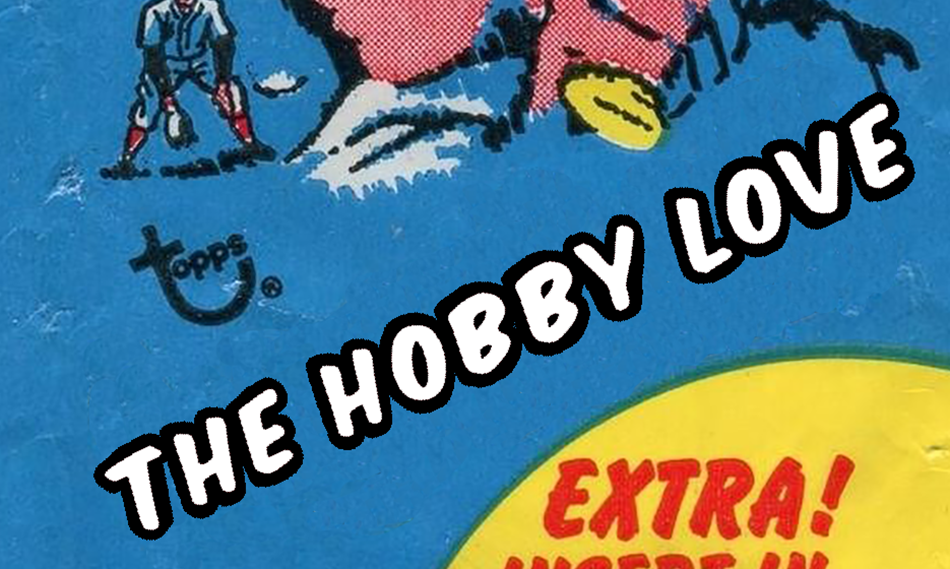Night Owl Cards published a post over on his blog talking about Target's decision to eliminate most trading card sales in their retail stores. In case you are unaware, Target has decided to take NFL, MLB, NBA and Pokemon cards out of their stores due to customers doing crazy things, like pulling guns on each other and getting into fist fights. They'll still be sold online and cards no one wants (like NHL or NASCAR) will still be sold in stores, too.
I left a comment on Night Owl's blog. I wrote:
I worked in retail management for years. I predicted Target's decision ages ago. I'm a card collector, and if I managed a retail store, I absolutely, 100% would never, ever, ever want trading cards sold in my store, ever. The margins are low and the theft is high, and customer problems are even higher. Never, ever, ever, ever. I can't imagine Target's operations division wants anywhere near these products again.
In my mind, the issue is the boom compared to scarcity. I think the scarcity is artificially created by the leagues and player associations limiting the amount of brands that can be produced and giving out exclusive licenses. It seems to me this was the case because of the bust in the nineties due to overproduction. I think they can lift some of the exclusives, and allow more licenses. For instance, MLB could allow Panini a license. NBA could certainly give Topps or Upper Deck a license, as Panini is clearly unable to keep up with demand of basketball cards. There can still be limitations on the number of brands made, but it's possible at this point to start opening up licensing again.
I'd like to expand on these comments a little bit.
The reason I would be so negative on having sports cards in my store would be the massive amount of additional work they would create for no extra reward. Retail management is a really hard job, made even more difficult by Covid. Retail managers in 2021 are badly burnt out, and don't want to deal with customers trying to shoot each other over stuff sold in the toys section.
I feel strongly that a lot this is caused by the artificial scarcity created by the leagues and player associations giving out exclusive licenses. A lot of that was done because after the trading card bust in the nineties, not a lot of people were collecting and there was a glut of product that made it a poor market for consumers.
This is no longer the case. MLB, for instance, can give Panini a license now. Panini has been making baseball cards with a license from the MLBPA, but can't use team logos or names because the MLB has given them no license. They could easily do this. There is obviously a significant demand for more product than what one company can produce for each sport.
The big one is obviously the NBA. Panini clearly is incapable of keeping up with the demand. A lot of these retail scenarios can be smoothed out by giving an additional NBA license to Topps or Upper Deck. UD would be a great one for the NBA, because Upper Deck owns the Fleer brand, and they have an exclusive agreement with Michael Jordan. Imagine the demand right now for new products featuring Jordan in a Bulls uniform. Also imagine the demand for Fleer, a legacy name for basketball cards. I have to think UD is on the phone regularly with the NBA trying to get something like this done.
Topps could also jump into the NFL, and Panini had a license for a few years from the NHL and could probably have that back. All of these companies could make significantly more money selling new products because of the pent up demand and the artificial scarcity created by exclusive licensing blocking them from making new products.
And the thing is, these new products don't have to create a glut on the market like in the nineties. They can learn from the past. The leagues can limit the amount of releases from each company to a level where each company releases enough to be profitable, but not so many as to oversaturate the market. This balance is hard to achieve in practice, and would be different for each league. Obviously the NBA could use more sets than the NHL.
Another idea would be limiting the types of cards allowed in additional sets. For instance, if you print a zillion LeMelo rookies, it is going to oversaturate the market. You could avoid people shooting each other at Target if you limit rookie cards to brands that are only sold online, and retail brands would feature sets that have lower value cards and are missing rookies. These would be of little interest to flippers, but would still be of interest to kids and general collectors.
That means the leagues or player associations would need to set a number as to how many brands can include rookies, or how many could include autos, or how many could include game-used, etc. You could thus produce more brands to satisfy additional demand without oversaturating the market, and get cards into the hands of people who are not just flipping them for profit.
What do you think?






